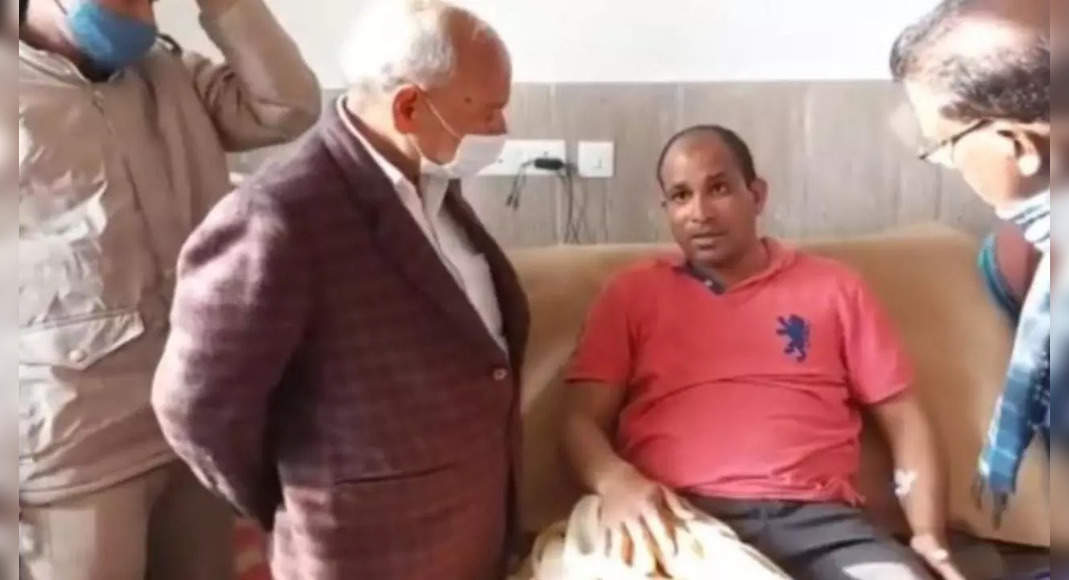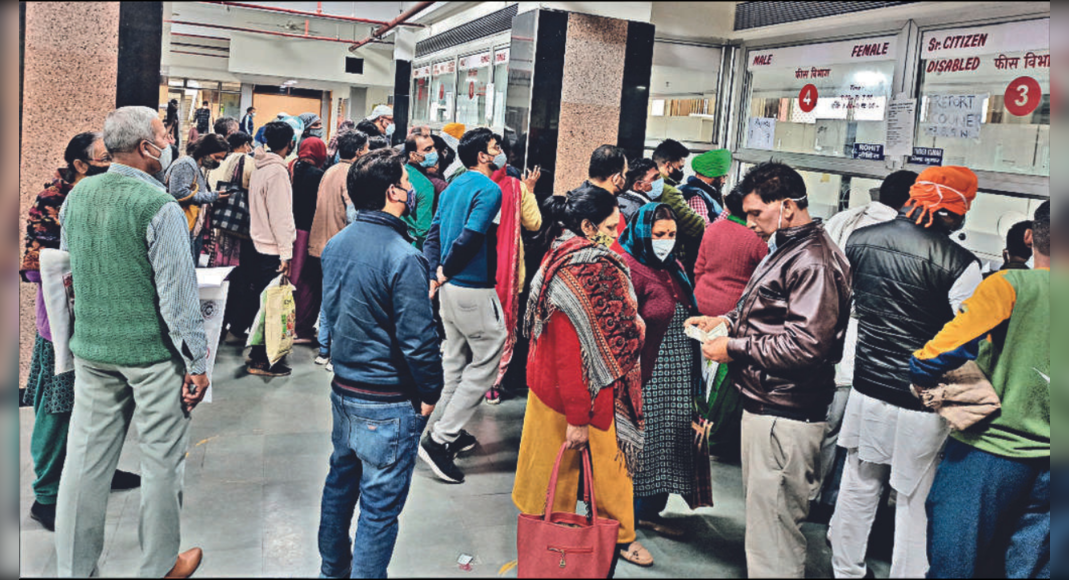Chandigarh: Haryana reported 4,89,964 new Covid-19 cases and 5,555 deaths in 95 days of the second wave, with an average of 58 deaths and 517 cases daily.
If the first wave of Covid took the authorities by storm, the second wave came with more complications, like mucormycosis, especially in May.
Till June 4, the deadly disease had infected 1,056 patients in 17 districts and claimed 91 lives.
Shortage of medicines, beds and ventilators among others kept the health authorities on tenterhooks during the second wave of Covid and the toll in three months has been more than 150% than during nearly 12 months of the first wave of the pandemic.
According to health authorities, when the second wave began on March 1, the state recorded 166 new cases and two deaths.
Thereafter began the upward trend and by May 15, the daily count reached even 15,700.
However, the slide has set in and the state reported 895 fresh cases and 71 deaths on Friday (June 4).
During the second wave, even the rural belts were affected, with mysterious deaths being reported, especially in Jind, Hisar, Sirsa, Bhiwani and Rohtak districts.
As the opposition levelled charges of lack of preparedness on the government, the Haryana government began special scanning of villages from May 15.
Chief minister Manohar Lal Khattar coordinated with the team led by additional chief secretary (health-cum-home) Rajeev Arora , additional principal secretary Dr Amit Aggarwal and health experts and officials involved in system of tracking, tracing and treatment.
The chief minister had said that the number of cases would come down from May 20, but the slide began well ahead of time.
“We cannot give credit to a single person or organisation for flattening the wave.
The entire state, including medicos, para medicos and nursing staff gave their best during this period,” said Khattar.
Having dealt with two Covid waves, the health authorities are now gearing up for the third anticipated wave which is expected to affect the children and youth.
Lack of infrastructure, staff shortage As cases mounted, health authorities grappled with a shortage of oxygen beds, medical oxygen, ventilators and BiPAP machines and ICUs.
Shortage of oxygen kept the health authorities on tenterhooks between April last week and May first week, as fatalities were reported in Faridabad, Rewari, Rohtak and Hisar districts of the state.
Till April 16, Haryana did not even have oxygen allocation quota and the health authorities calculated a requirement of 60MT against actual requirement of 300MT during peak days.
The shortage did not only trigger black marketing of medical oxygen cylinders but also made Khattar and his team to put in place its own system of procurement and supply of oxygen, oxygen beds, ventilators and ICU beds.
DRDO was enlisted for providing back-up support to the state after private hospitals got embroiled in overcharging controversies.
Black marketing of medicines, oximeters The second wave triggered panic buying, stocking and hoarding of essential medicines like remdesivir, tocilizumab and amphotericin-B, while rates of Covid essentials like thermal scanners, oximeters, oxygen concentrators and emergency cylinders shot up even as suppliers ran out of stock and hoarders stocked up.
TOI had busted one such racket in Hisar.
In the black market, an oximeter was available for Rs 1,400 per piece when the market rate is generally Rs 250 to Rs 300.
Oxygen concentrators, BiPAP machines were available at a rent of Rs 25,000 to 40,000 per week.
Police arrested 76 persons and registered over 70 cases in this connection.
Haryana government too arranged over 1 lakh oximeters through local purchase, CSR and donations from general public Farmers agitation blamed for spike Unlike first wave, the impact of second Covid wave was felt more in rural areas, including farmers.
As more farmers were infected at Shahjahanpur-Khera borders of Haryana-Rajasthan border, the BJP-JJP alliance government in the state blamed protesting farmers for the spread of Covid in rural belts.
Even Haryana health minister Anil Vij claimed that cases in rural belts were due to protesting farmer frequenting the Delhi borders.
These charges have been trashed by opposition leader and former CM Bhupinder Hooda and farm leader Gurnam Singh Charuni.
“Had it been the case, then why was not a single person infected during the last Covid wave? All this is being said just to derail the farmers’ protest,” said Charuni.
Lockdown: ‘Mahamari Alert-Surakshit Haryana’ While the first 15 days of May saw a lockdown in the state, restrictions continued even in the second fortnight of the month.
The measures led to flattening of the wave, according to government claims.
However, other measures like increased testing and vaccination also helped.
Till June 4, 92.19 lakh people had been tested and 59.52 lakh vaccinated in the state.







